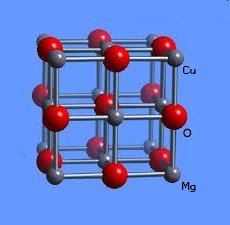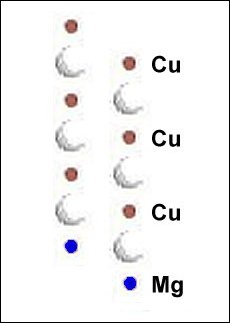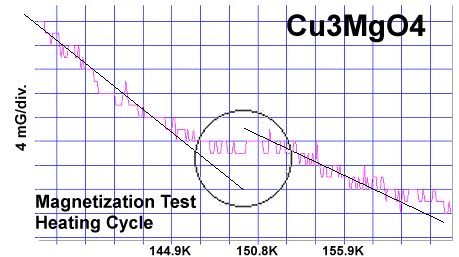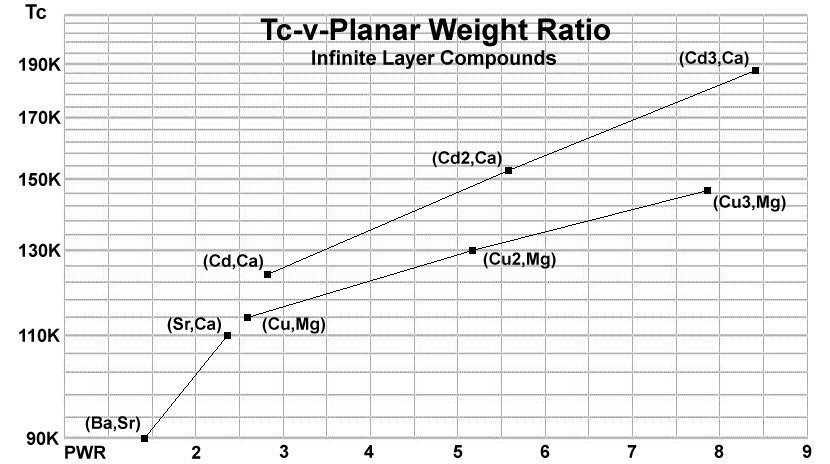





|
The simple cubic structure of the prototype CuMgO2 is shown at left. As additional copper and oxygen atoms are appended to the C (vertical) axis, the structure expands to become tetragonal (below left) with progressively higher transition temperatures resulting from higher planar weight ratios (PWR). The magnetization plots for CuMgO2 and Cu2MgO3 are shown at page top. The former, with a PWR of 2.6, has a critical transition temperature (Tc) near 114 Kelvin. And the latter, with a PWR over 5.2, has a Tc close to 130K. (Lines have been drawn through the noise to approximate the average of the data points.) 
Above is a magnetization plot of Cu3MgO4, which produced the highest Tc near 147K. Unfortunately, like the legacy infinite layer superconductors, the volume fraction of all three of these discoveries was low. Cu2MgO3 produced the highest VF, transitioning about 15 milligauss. Below: Tc-v-PWR of this new family of ternary superconductors has been plotted alongside the legacy (4-element) infinite layer compounds for comparison. Both PWR and the atomic weight of the unit cell clearly impact the resulting Tc. This lends support to the theory that lattice vibrations play a key role in determining Tc. |

The chemical precursors were pelletized at 60,000 PSI and sintered for 10 hours at 880C. They were then annealed for 10+ hours at 500C in flowing O2. Temperature was determined using an Omega type "T" thermocouple and precision OP77 DC amplifier. The magnetometer employed twin Honeywell SS94A1F Hall-effect sensors with a tandem sensitivity of 50 mv/Gauss.
RESEARCH NOTES: Anecdotally these 3 formulations were noticeably harder than typical copper-oxide superconductors. This is most likely due to the high magnesium-oxide content. This is a desirable trait. The copper-oxides are both brittle and strongly hygroscopic. All tests should be performed immediately after annealing.
RE-PUBLICATION NOTICE: Elsevier Publishing, dba Elsevier Science, as well as Morris Communications, both print and broadcast divisions, are specifically prohibited from re-publishing any part of this news story.
E. Joe Eck
© 2016 Superconductors.ORG
All rights reserved.
 BACK to "News" page at Superconductors.ORG
BACK to "News" page at Superconductors.ORG